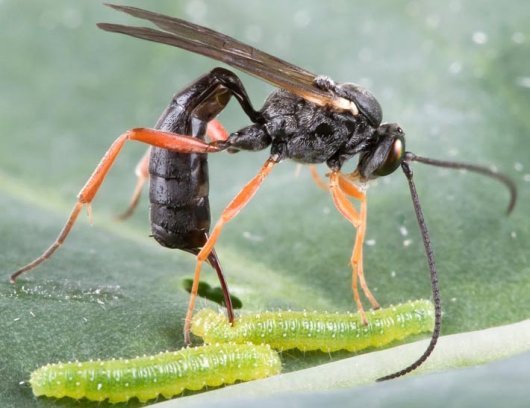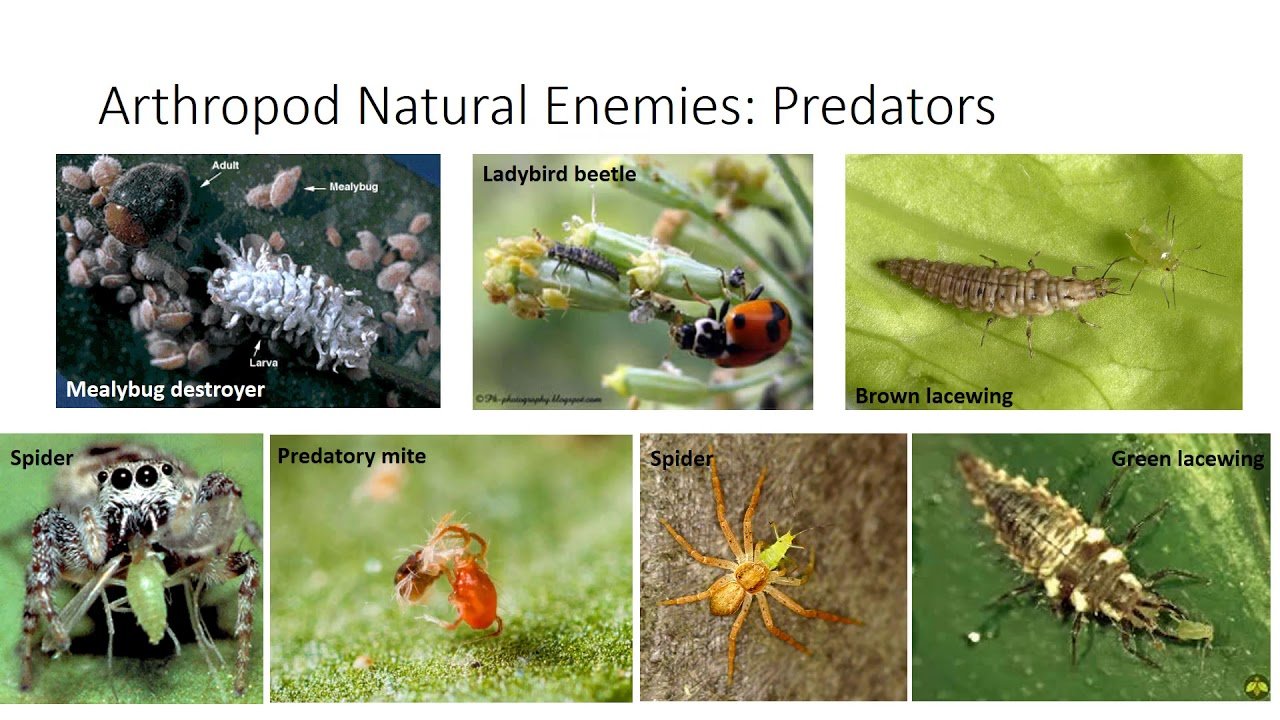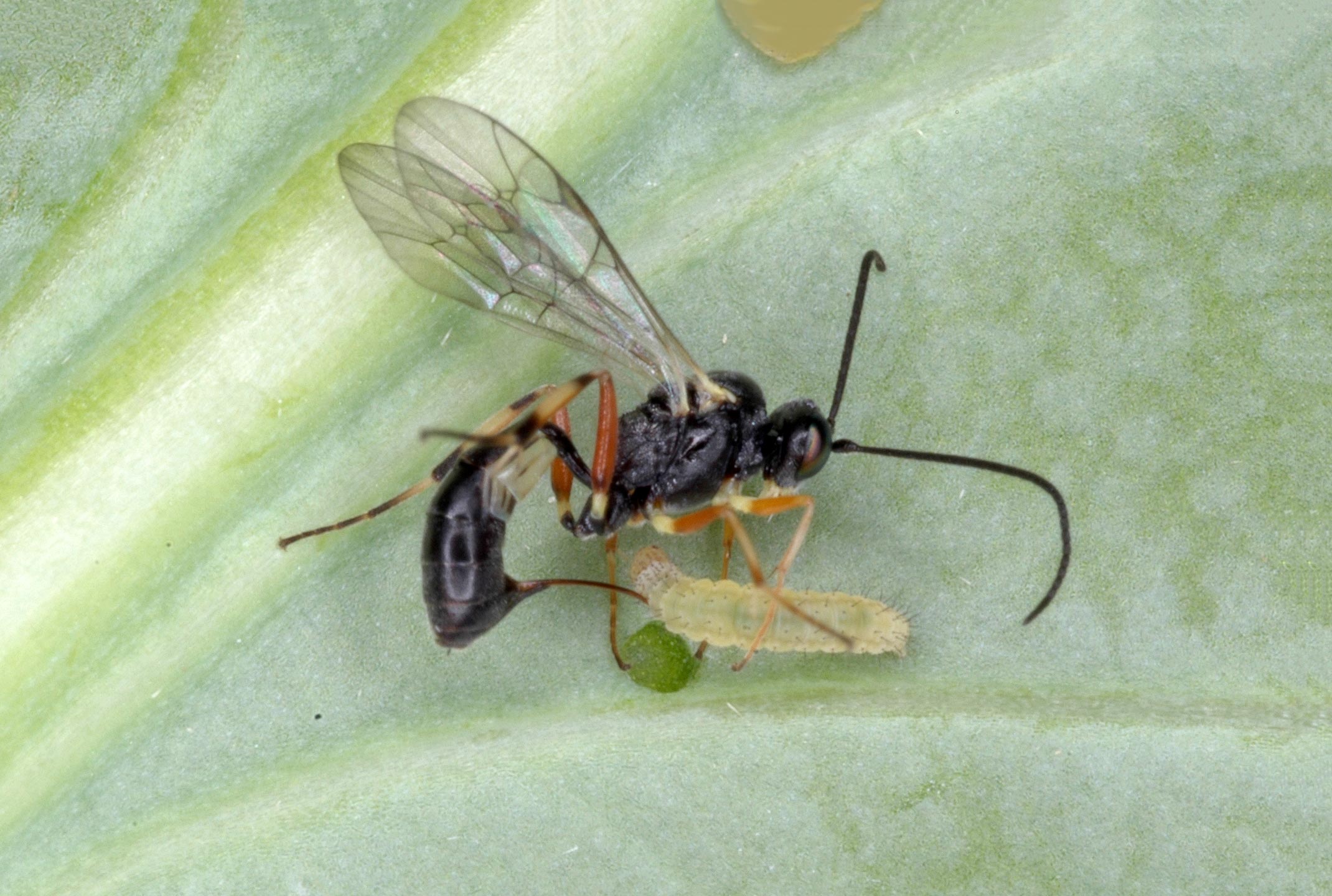Types Of Biological Pest Control
There are three types of biological pest control. In classical biological control, natural predators, parasites, or pathogens of a pest are imported into an area to protect a crop or livestock. A “pathogen” is an organism that causes disease. Importation can be a useful strategy when the pest has been introduced from another region and has no predators in its new habitat.
In conservation biological control, no new plants or animals are introduced to an area, but the environment is manipulated to favor the survival of local enemies of the pest. For example, a farmer or gardener may provide additional food sources or suitable habitats for a pest’s enemies.
In augmentation biological control, plants and animals that control a particular pest and are already present in an area are increased in number by inoculation or inundation. Inoculation is the introduction of relatively few organisms. Inundation involves the introduction of a very large number of organisms.
The Environmental Working Group publishes a yearly “Dirty Dozen” list of the produce with the most pesticide residues. In the 2020 list, strawberries have the most pesticides, spinach has the second highest level of the chemicals, and kale occupies the third slot. The EWG recommends that we eat these items in an organic form.
Spinach occupies the second position in the EWG’s 2020 Dirty Dozen list.
Predatory Insects Used In Biological Pest Control
Before discussing the issues associated with biological pest control at a deeper level, lets look at some of the most common commercially available insects used in pest control and the pests they target:
Is it ethical to introduce new insects into areas where they are not native?
For the most part, scientists and ethicists say introduced species are a danger to the ecosystem, but that may not be the case for biological pest control. Most biological pest control efforts avoid this dilemma by simply taking an insect that already exists in the area and introducing it in large, often overwhelming, numbers. This tactic facilitates quick control and/or eradication of the target pest. In general, this method is considered ethically sound despite some state laws that restrict certain insect shipments.
Will the introduced species feed on species that werent initially targeted?
According to the;U.S. Fish & Wildlife Service, non-target attacks are likely when an initial pest population is destroyed or a more susceptible target is discovered. Will it always happen? No. Oftentimes the introduced control insects die off after their food supply is exhausted.
How can we assure these new insects dont compete with native species?
Does biological pest control hold up to the governments organic standards?
The;USDA states;in its regulations that the introduction of predators or parasites of the pest species is permitted for use in organic operations.
Biological Pest Controls For The Home Landscape
Many gardeners are concerned about environmental and health effects of using chemical pesticides in the landscape. Yet pests commonly reach destructive levels, requiring control. Biological control is a safe, effective and environmentally friendly form of pest management that can easily be applied to the home landscape. It is most effective when practiced as part of a multifaceted Integrated Pest Management program. This Fact Sheet outlines the goals of biological control and how to apply this strategy in the home landscape.
Biological control is defined as the suppression or prevention of a pest outbreak through the purposeful manipulation of natural enemies. All organisms have natural enemies that limit their population size through predation, parasitism or disease. In a biological control program, gardeners work to maximize the impact of predators, parasites and disease agents to manage pests. Biological control can be used to manage insect, disease and weed pests in the landscape.
Biological control can be described as three sets of three principles. These are:
Read Also: Geometry Lesson 1.7 Answers
Economics Of Biological Pest Control
Biological control proves to be very successful economically, and even when the method has been less successful, it still produces a benefit-to-cost ratio of 11:1. One study has estimated that a successful biocontrol program returns £32 in benefits for each £1 invested in developing and implementing the program, i.e., a 32:1 benefit-to-cost ratio. The same study had shown that an average chemical pesticide program only returned profits in the ratio of 2.5:1.
What Does Biological Pest Control Mean

Biological pest control is a method of maintaining pest populations below damaging levels by using living organisms instead of relying completely on chemicals. This method uses natural mechanisms such as herbivory, predation, or parasitism to control weeds, plant diseases, mites, and insects.
This method is highly suitable for anyone who want to use as few chemicals as possible while gardening. A beneficial organism is chosen specifically to control a harmful pest. The three main types of biological pest controls include classical biological control, conservation, and augmentation.
Read Also: Eoc Fsa Warm Ups Algebra 1 Answers
Directly Introducing Biological Controls
Most of the biological controls listed above depend on providing incentives in order to ‘naturally’ attract beneficial insects to the garden. However there are occasions when biological controls can be directly introduced. Common biocontrol agents include parasitoids, predators, pathogens or weed feeders. This is particularly appropriate in situations such as the greenhouse, a largely artificial environment, and are usually purchased by mail order.
Some biocontrol agents that can be introduced include;
- Encarsia formosa. This is a small predatory chaclid wasp which is parasitical on whitefly, a sap-feeding insect which can cause wilting and black sooty moulds. It is most effective when dealing with low level infestations, giving protection over a long period of time. The wasp lays its eggs in young whitefly ‘scales’, turning them black as the parasite larvae pupates. It should be introduced as soon as possible after the first adult whitefly are seen. Should be used in conjunction with insecticidal soap.
Advantages Of Biological Control:
Recommended Reading: Eoc Fsa Warm Ups Algebra 1 Answers
Approaches To The Biological Control Of Insect Pests
EN004
Approaches to the Biological Control of Insect Pests
Kimberly Stoner
E-mail: Introduction
Biological control is the use of living organisms to suppress pest populations, making them less damaging than they would otherwise be. Biological control can be used against all types of pests, including vertebrates, plant pathogens, and weeds as well as insects, but the methods and agents used are different each type of pest. This publication will focus on the biological control of insects and related organisms.
Recognizing the role of natural enemies of pest insects
Pests are those species that attack some resource we human beings want to protect, and do it successfully enough to become either economically important or just a major annoyance. They are only a tiny fraction of the insect species around us. Even many of the species we would recognize as important pests only occasionally do significant damage to us or our resources.
The three categories of natural enemies of insect pests are: predators, parasitoids, and pathogens.
Using biological control in the field
There are three primary methods of using biological control in the field: 1) conservation of existing natural enemies, 2) introducing new natural enemies and establishing a permanent population , and 3) mass rearing and periodic release, either on a seasonal basis or inundatively.
1. Conservation of existing natural enemies
Selecting and using pesticides to minimize the effect on natural enemies
For young people:
What Is Biological Control
Biological control is a method of pest control that manages the population of pests without chemical pesticides. This method can be used to control insects, small animals, and parasitic plants. This method typically involves introducing natural predators into the ecosystem.;
Biological control has the advantage of being effective, environmentally friendly, and self-sustaining. The plants, predators, and natural deterrents used in biological control are called;biological control agents.
When gardeners introduce lady bugs into their gardens to control aphid colonies, theyre practicing biological control in this instance, the lady bugs are the biological control agents. Likewise, planting mint to keep spiders away from entrances, uses mint as the biological control agent and is actually a form of conservation biocontrol, or habitat manipulation.;
Read Also: Lewis Diagram For Ccl4
Biological Pest Control: What Is It Advantages Disadvantages And Examples
The control of pests with chemical products has many disadvantages, including its great cost and the risk of contamination that it entails, both for food and for the environment and our health.;For this reason, biological pest control is revealed as an ecological and very effective alternative, especially in the long term.
If you want to learn more about;biological pest control, what it is, advantages, disadvantages and examples;, then keep reading this article.
Approval Of Biological Control Agents In Europe
The regulations;in Europe;for approval;of;biological control agents and products;vary depending on the;type of beneficial;organism.;Microorganisms are categorized;based on;the intended use,;either as plant protection products;or biocides,;and require;approval;as such. After approval;of the active;microorganism;at EU level, the;formulated product;must be;authorized;nationally. Today, this is done in three major climate zones rather than individual countries. For;insects;and other small animals, there;is no common European;legislation;and the countries address them differently.
In Sweden, the;Swedish Chemicals Agency;is the main;responsible authority for authorization of;microbial agents, whereas the Swedish Environmental Protection Agency authorizes new insects;and other small animals.
Read Also: Kuta Angle Addition Postulate
Different Types Of Biological Control
There are four basic types of biological control:
Importation Or Classical Biological Control

Many of our worst pests are exotic species introduced from other countries. One reason they become problematic is because they are introduced without their natural enemies. In importation biological control, natural enemies from the exotic pests country of origin are introduced to re-establish predator-prey relationships. Importation biological control is a rigorous science and is highly regulated. It requires extensive research conducted under quarantine to avoid introduction of unwanted organisms that may have been collected with the control agent. Likewise, extensive testing of the host-range of the biological control species is done to ensure it will not have undesirable impacts on native species. Importation biological control has produced hundreds of successes against many different types of pests.
Read Also: What Is The Molecular Geometry Of Ccl4
Insect Assassins: Using Biological Pest Control
As farmers, greenhouse managers and everyday gardeners seek out solutions to their plant problems, one particular method seems to stand out biological pest control. This strategy uses specially introduced predatory or parasitic insects to control another insect population thats actively harming a crop.
Gardeners who recognize their problem can order these beneficial insect assassins in mass quantities and release them near their garden. Within a few weeks, the pest problem is resolved.
In general, its a great process using insects to fight insects means theres no synthetic chemicals used and theres practically no human labor involved in dispersing these beneficial bugs. Unfortunately, some worry there may be other costs since the process introduces these insects to a new location.;This, of course, leads to several questions from organic-minded gardeners:
Aphids are a huge problem for vegetable gardeners.These little bugs drain the nutrients from plants,killing the plant in the process.
Three Main Biological Control Strategies
While it seems simple, getting biocontrol right can be a challenge, especially if youve never done it before. There are three main strategies used in the biological control of pests, each having different steps and using different agents. These three strategies are classical biocontrol , augmentative biocontrol , and conservation biocontrol.
Recommended Reading: What Does G Mean In Physics
Biological Control By Using Resources Of Natural Origin And Pheromones
In addition to macro-organisms and micro-organisms, there are resources of natural origin and pheromones that can also be used to control parasites and diseases. This is a very broad category, which also includes plant extracts, vitamins, and plant hormones that act preventively to make plants healthy and strong.
Pheromones are used to lure parasites into a trap. Sex pheromones and aggregation pheromones are the most commonly used. Here is an example of pheromones used to attract moths , mostly for indoor use.
Kitchen Ingredients That May Remove Pests
Some common kitchen substances may be useful for getting rid of garden pests and are worth trying before another method of pest control is used. For example, a canola oil spray is sometimes used as an insecticide yet is nontoxic to humans. It shouldn’t be sprayed near water, however. Garlic is said to repel birds and insects and also degrades quickly. Black pepper oil is used to repel mammals. Although it may not be a common household product in some countries, neem seeds and the oil from the seeds are used to create a natural pesticide that kills many insects.
Chili peppers are chopped and then soaked in water for a day to make an insecticide. Some people add a small amount of soapy water to the chili water to make a spray that will stick to plants. Try to use a soap or detergent that is safe for the environment if you do this. Be careful if you use chili peppers, since they can burn and irritate skin and mucous membranes.
Read Also: What Does Abiotic Mean In Biology
Biological Weed Control Agents
The biological control of insect pests to maintain pest populations below damaging levels by the use of living organisms. Natural enemies of arthropods fall into three major categories such as predators, parasitoids, and pathogens.
Predators: Predators are mainly consuming prey in a large number directly during their whole lifetime, these are free-living species. Given that major crop pests are insects, where many of them are considered as predators that are used in biological control are insectivorous species. Lady beetles, particularly their larvae which are active between the month of May and July in the regions of the northern hemisphere and also consume mites, scale insects, and small caterpillars.
Parasitoids: Parasitoids can lay their eggs on or inside the body of an insect host, which can further be used as food for the developing larvae. Whereas the insect host is killed ultimately. Most of the insect parasitoids are flies or wasps, and many of them have a very narrow host range. The most important groups are the ichneumonid wasps, which use caterpillars as their main hosts. The braconid wasps can attack caterpillars and a wide range of other insects that include aphids. The chalcid wasps can parasitize eggs and larvae of many of the insect species. Parasitoids are most effective at reducing pest populations while their host organisms have limited refuges to hide from them.
Combined Use Of Parasitoids And Pathogens
In cases of massive and severe infection of invasive pests, techniques of pest control are often used in combination. An example is the emerald ash borer, Agrilus planipennis, an invasive beetle from China, which has destroyed tens of millions of ash trees in its introduced range in North America. As part of the campaign against it, from 2003 American scientists and the Chinese Academy of Forestry searched for its natural enemies in the wild, leading to the discovery of several parasitoid wasps, namely Tetrastichus planipennisi, a gregarious larval endoparasitoid, Oobius agrili, a solitary, parthenogenic egg parasitoid, and Spathius agrili, a gregarious larval ectoparasitoid. These have been introduced and released into the United States of America as a possible biological control of the emerald ash borer. Initial results for Tetrastichus planipennisi have shown promise, and it is now being released along with Beauveria bassiana, a fungal pathogen with known insecticidal properties.
You May Like: Who Are Paris Jackson’s Biological Parents
What Is Biological Pest Control
Pests arent just those pesky insects that invade our homes. They could be plants, like the weeds that compete with our precious plants for nutrients and space. Pests could also include the rodents that infest our homes or feast on our plants.
The use of insecticides and pesticides for controlling pests has proven effective over time. But they often come with consequences. Synthetic insecticides and pesticides can contaminate the soil and negatively affect the plants youre trying to protect.
This eventuality gave rise to organic means of controlling unwanted pests, which dont pose any threat to us, our plants, or the environment at large. Another quite potent method of pest management is biological pest control. Do you want to learn more about it?
Biological Pest Control List

The current list is defined in guidance note DGAL/SDQSPV/2016-853 dated 03/11/16 and published in the official bulletin of the ministry. This note also provides the criteria for drawing up definitions for the targeted products and the methods used for establishing the list.
Guidance note :
Also Check: What Does G Represent In Physics